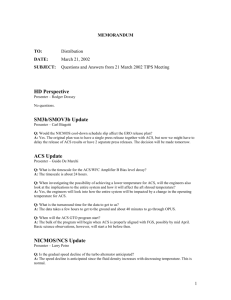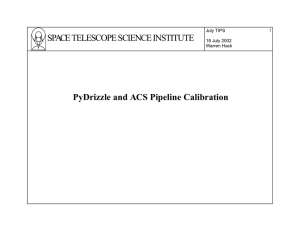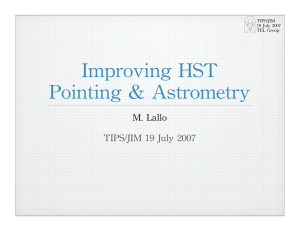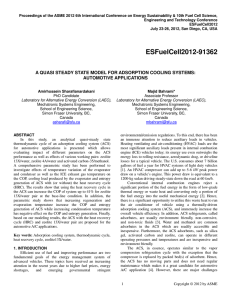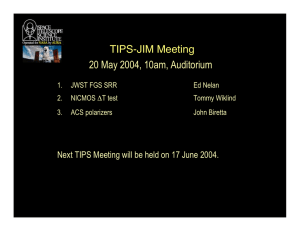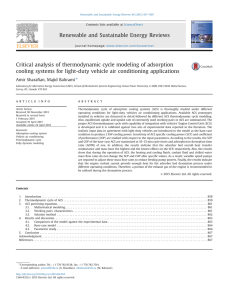SMOV3b Update ACS Status Distribution
advertisement
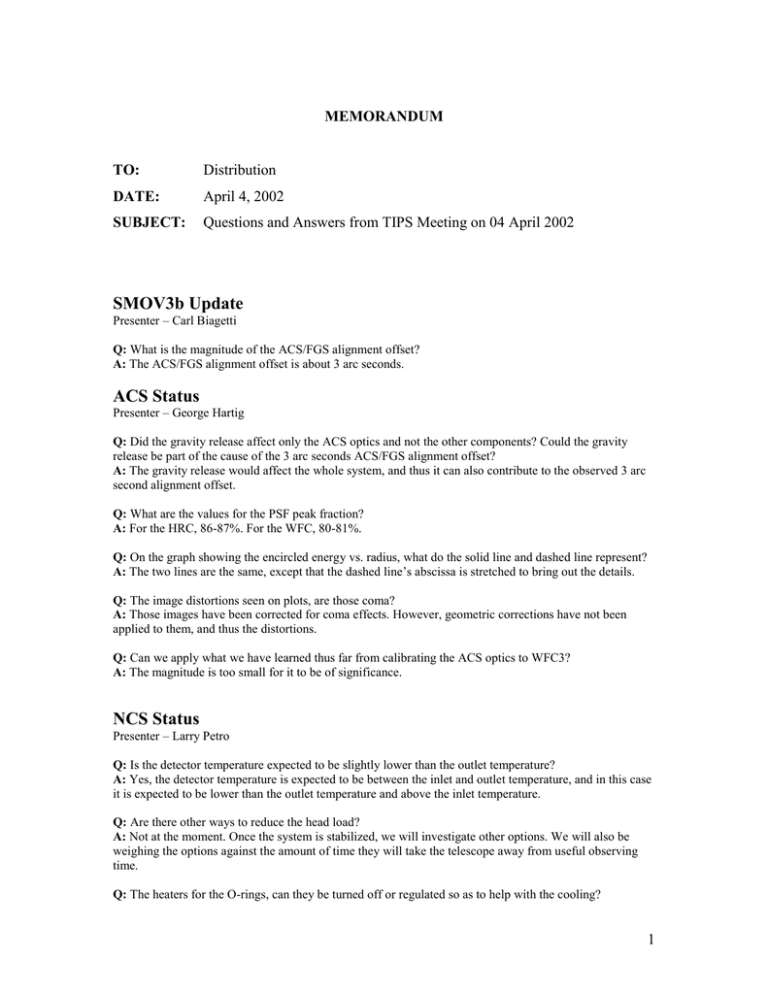
MEMORANDUM TO: Distribution DATE: April 4, 2002 SUBJECT: Questions and Answers from TIPS Meeting on 04 April 2002 SMOV3b Update Presenter – Carl Biagetti Q: What is the magnitude of the ACS/FGS alignment offset? A: The ACS/FGS alignment offset is about 3 arc seconds. ACS Status Presenter – George Hartig Q: Did the gravity release affect only the ACS optics and not the other components? Could the gravity release be part of the cause of the 3 arc seconds ACS/FGS alignment offset? A: The gravity release would affect the whole system, and thus it can also contribute to the observed 3 arc second alignment offset. Q: What are the values for the PSF peak fraction? A: For the HRC, 86-87%. For the WFC, 80-81%. Q: On the graph showing the encircled energy vs. radius, what do the solid line and dashed line represent? A: The two lines are the same, except that the dashed line’s abscissa is stretched to bring out the details. Q: The image distortions seen on plots, are those coma? A: Those images have been corrected for coma effects. However, geometric corrections have not been applied to them, and thus the distortions. Q: Can we apply what we have learned thus far from calibrating the ACS optics to WFC3? A: The magnitude is too small for it to be of significance. NCS Status Presenter – Larry Petro Q: Is the detector temperature expected to be slightly lower than the outlet temperature? A: Yes, the detector temperature is expected to be between the inlet and outlet temperature, and in this case it is expected to be lower than the outlet temperature and above the inlet temperature. Q: Are there other ways to reduce the head load? A: Not at the moment. Once the system is stabilized, we will investigate other options. We will also be weighing the options against the amount of time they will take the telescope away from useful observing time. Q: The heaters for the O-rings, can they be turned off or regulated so as to help with the cooling? 1 A: No, the heaters are needed for safety reasons. Q: If the temperature of the detectors stabilized at 100K, what kind of science can we do? A: We are currently looking into this. Q: How is the attitude of the telescope affects cooling and how would that constrain observations? A: When the Sun is at certain aspects relative to the telescope and when we have large Bright Earth exposure, these two situations can warm up the radiator. We will have to wait until the system stabilizes before we can separate out the various components. Q: Any plans to correct the cooling model? A: Yes, there is work in progress to correct the cooling model. Q: Are the observed pressure spikes in the aft-shroud a concern for MAMA operations? A: No, it should be fine. WFPC2 SMOV3b Results Presenter – Brad Whitmore Q: How does the ripple compare to the read noise? A: They are not measurable. 2


